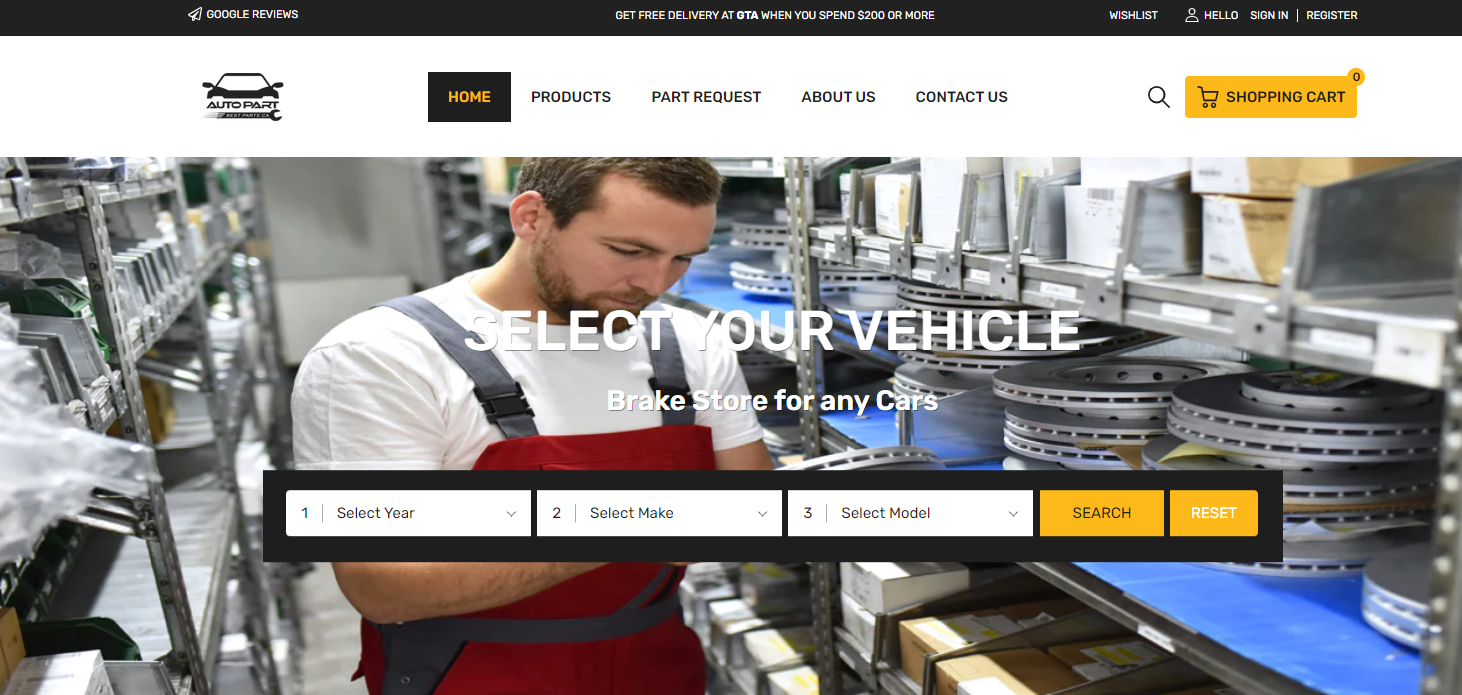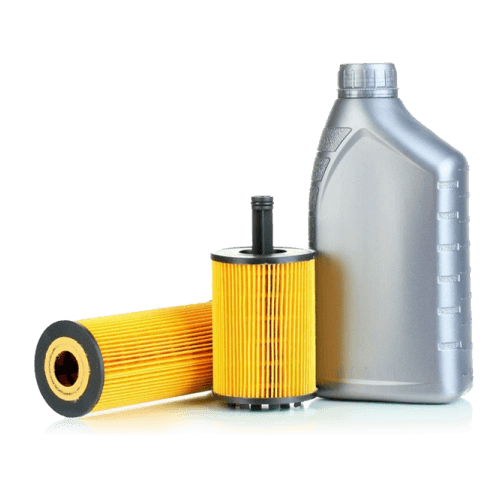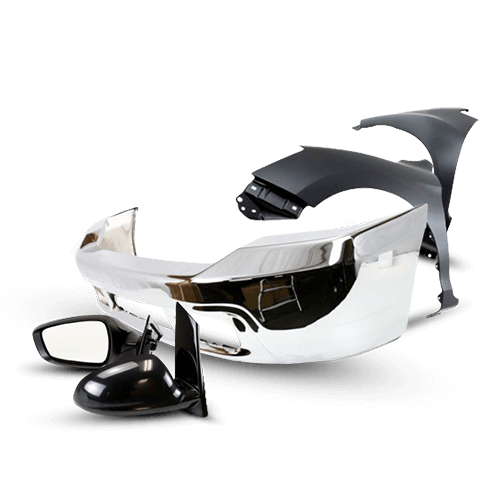
Top 7 Causes Of Uneven Brake Pad Wear & Solutions
Your vehicle's braking system is a symphony of precision engineering, designed to bring you to a halt smoothly and swiftly. However, like any complex mechanism, it's susceptible to wear and tear over time. Brake pad wear is a common occurrence in any vehicle, but when it becomes uneven, it can lead to significant safety concerns. Uneven brake pad wear can compromise your vehicle's braking performance, potentially endangering you and others on the road.
In this in-depth guide, we will delve into the critical topic of brake systems, specifically focusing on the top 7 causes of uneven brake pad wear and provide practical solutions to ensure that your brakes remain in optimal condition.
1. Rotor Thickness Alteration
Rotor thickness variation is a primary cause of uneven brake pad wear. Due to a combination of factors, including heat generated during braking and friction, the rotors can wear unevenly over time. As the rotors thin, they come into uneven contact with the brake pads, resulting in irregular wear patterns that can be both dangerous and inefficient.
Solution: To successfully handle this issue, it is critical to measure the thickness of your rotors on a regular basis. When the rotors are replaced, they maintain even contact with the brake pads, allowing for consistent and safe braking.

2. Sticky Caliper Pistons
Sticky caliper pistons can contribute significantly to uneven brake pad wear. When the caliper pistons become sticky or fail to retract correctly after braking, they keep applying uneven pressure on the brake pads. This continuous friction results in uneven wear patterns, which can compromise braking efficiency and safety.
Solution: The remedy for this problem lies in regular cleaning and lubrication of the caliper pistons. Ensuring that they move freely and release the brake pads evenly is essential for maintaining uniform wear.
3. Misalignment in Brake Pad Parts
Uneven pressure distribution on the brake pads can be caused by misalignment of various brake pad components, such as caliper brackets and shims. When these components are misaligned, certain areas of the brake pads may wear faster than others, resulting in uneven wear..
Solution: Achieving proper alignment during the installation of brake pad components is paramount. Ensuring that all parts are correctly positioned and lubricated helps maintain even pressure distribution, promoting uniform brake pad wear.
4. Dirty or Rusted Rotors
The presence of dirt and rust on the rotors can also contribute to uneven brake pad wear. Contaminants and rust can create irregularities on the rotor's surface, leading to uneven contact with the brake pads.
Solution: To mitigate this issue, it is essential to regularly clean and inspect the rotors for rust or contaminants. If significant corrosion is present, consider either replacing or resurfacing the rotors to restore a smooth and even braking surface.

5. Inspection of Warp Rotors
Warped rotors represent another common cause of uneven brake pad wear. Warping can occur due to excessive heat and stress during braking, resulting in high and low spots on the rotor's surface. These irregularities can translate into uneven contact with the brake pads.
Solution: When dealing with warped rotors, the best course of action is to replace or resurface them. By doing so, you ensure that the rotor's surface remains smooth, allowing for even brake pad wear and consistent braking performance.
6. Corroded or Seized Guide Pins
Corroded or seized guide pins within the brake system can impede the caliper's free and even movement. When the caliper cannot move smoothly, it exerts uneven pressure on the brake pads, leading to inconsistent wear.
Solution: Address this issue by thoroughly cleaning, lubricating, or replacing corroded or seized guide pins. Ensuring the caliper's unobstructed movement is essential for maintaining even brake pad wear.
7. Types of Brake Pads
The type of brake pads you choose can also influence wear patterns. Different materials and formulations may wear differently, potentially leading to uneven brake pad wear over time.
Solution: To minimize uneven wear, select brake pads that are well-suited to your specific driving habits and vehicle type. Consult your vehicle's manual or seek advice from a qualified mechanic for guidance in choosing the appropriate brake pads.
read more: Exploring Different Suspension Types and Their Functions

Solutions to Prevent Uneven Brake Pad Wear Symptoms
Now that we have explored the causes of uneven brake pad wear in detail, let's discuss preventive measures to ensure that your brake pads wear evenly and to help you avoid experiencing the detrimental effects of uneven brake pad wear symptoms:
Regular Check of Brakes
Regular inspections of your brakes, ideally performed every six months or as recommended in your vehicle's maintenance schedule, are essential. This proactive approach enables you to identify signs of wear or damage early, preventing uneven brake pad wear.
Correct Installation of Brake Pads
Proper installation of brake pads involves meticulous attention to detail, including precise alignment and thorough lubrication. Following correct installation procedures is crucial to ensure even brake pad wear.
Maintenance of Brake Components
Routine maintenance of your vehicle's brake components is vital for extending the lifespan of your brake pads. This maintenance regimen includes regular cleaning, lubrication, and inspection of all brake-related parts.
How to Detect Uneven Brake Pad Wear
Detecting the Causes Of Uneven Brake Pad Wear involves visually inspecting the brake pads and listening for unusual sounds during braking. Signs of uneven wear become apparent through a careful examination of your brake pads and by paying attention to any audible cues. Inspect the pads for variations in thickness, grooves, or ridges on the surface, and listen for squealing, grinding, or scraping noises while braking. Due to the potential safety risks associated with Causes Of Uneven Brake Pad Wear, regular inspections are imperative to ensure optimal performance and safety on the road.
Identifying Factors That Lead to Brake Pad Wear
Understanding the specific driving conditions and habits that contribute to brake pad wear is essential. By recognizing these factors, you can take preventive measures to minimize uneven wear.
Variations in Rotor Thickness
Regularly measuring rotor thickness is a proactive way to identify uneven brake pad wear early on. Monitoring these measurements allows you to detect any irregularities promptly.
Check Residual Brake Pressure
Checking for residual brake pressure can provide useful information about the state of your braking system. It can help identify issues such as sticky caliper pistons or misalignment that may lead to uneven brake pad wear.

How to Fix Uneven Brake Pad Wear?
If you've noticed uneven brake pad wear on your vehicle, it's critical that you address the problem right away. Uneven brake pad wear can result in decreased braking performance, longer stopping distances, and even potential safety hazards. In the section that follows, titled "How to Fix Uneven Brake Pad Wear," we'll look at the reasons why brake pads wear unevenly and offer practical solutions to make sure your car's braking system works properly. Here are the steps to take to resolve this issue:
1. Brake Caliper Alignment
If misaligned brake calipers are the culprit, it's essential to realign them correctly. This should be done by a professional mechanic. They will inspect the calipers, adjust them as needed, and ensure even pressure on the brake pads.
2. Suspension System Inspection
Have your vehicle's suspension system inspected regularly by a qualified mechanic. They will check for worn or damaged components and replace them if necessary. Proper suspension maintenance can help prevent uneven brake pad wear.
3. Brake Pad Replacement
If your brake pads are already significantly unevenly worn, it's advisable to replace them. When replacing brake pads, always use high-quality pads that match your vehicle's specifications. It's also essential to lubricate the caliper slides to ensure even wear in the future.
4. Adjust Driving Habits
To prevent future uneven brake pad wear, adjust your driving habits. Avoid sudden stops and starts and give yourself ample time to brake gradually. This not only extends the lifespan of your brake pads but also enhances overall safety.
By following these steps, you can effectively address uneven brake pad wear, ensuring the safety and performance of your vehicle's braking system.

Conclusion
Uneven brake pad wear puts your vehicle's safety and performance at risk." By gaining a thorough understanding of the Causes Of Uneven Brake Pad Wear and putting the solutions discussed in this comprehensive guide into action, you can protect yourself and others on the road by ensuring that your brakes wear evenly and provide consistent, dependable stopping power.
FAQs
• How frequently should I inspect my brakes for wear?
Regular brake inspections should be conducted at least every six months or in accordance with your vehicle's recommended maintenance schedule to catch wear issues early.
• What are the telltale signs of uneven brake pad wear?
Uneven braking, vibrations during braking, and squealing noises are common indicators of uneven brake pad wear. If you notice any of these signs, it's crucial to have your brakes inspected.
• How can I prevent sticky caliper pistons?
Regularly cleaning and lubricating the caliper pistons during brake maintenance can prevent them from becoming sticky and causing uneven wear.
• What factors should I consider when selecting brake pads to prevent uneven wear?
When choosing brake pads, consider your driving habits and vehicle type. Consult your vehicle's manual or a qualified mechanic for guidance on selecting the most suitable brake pads.























































